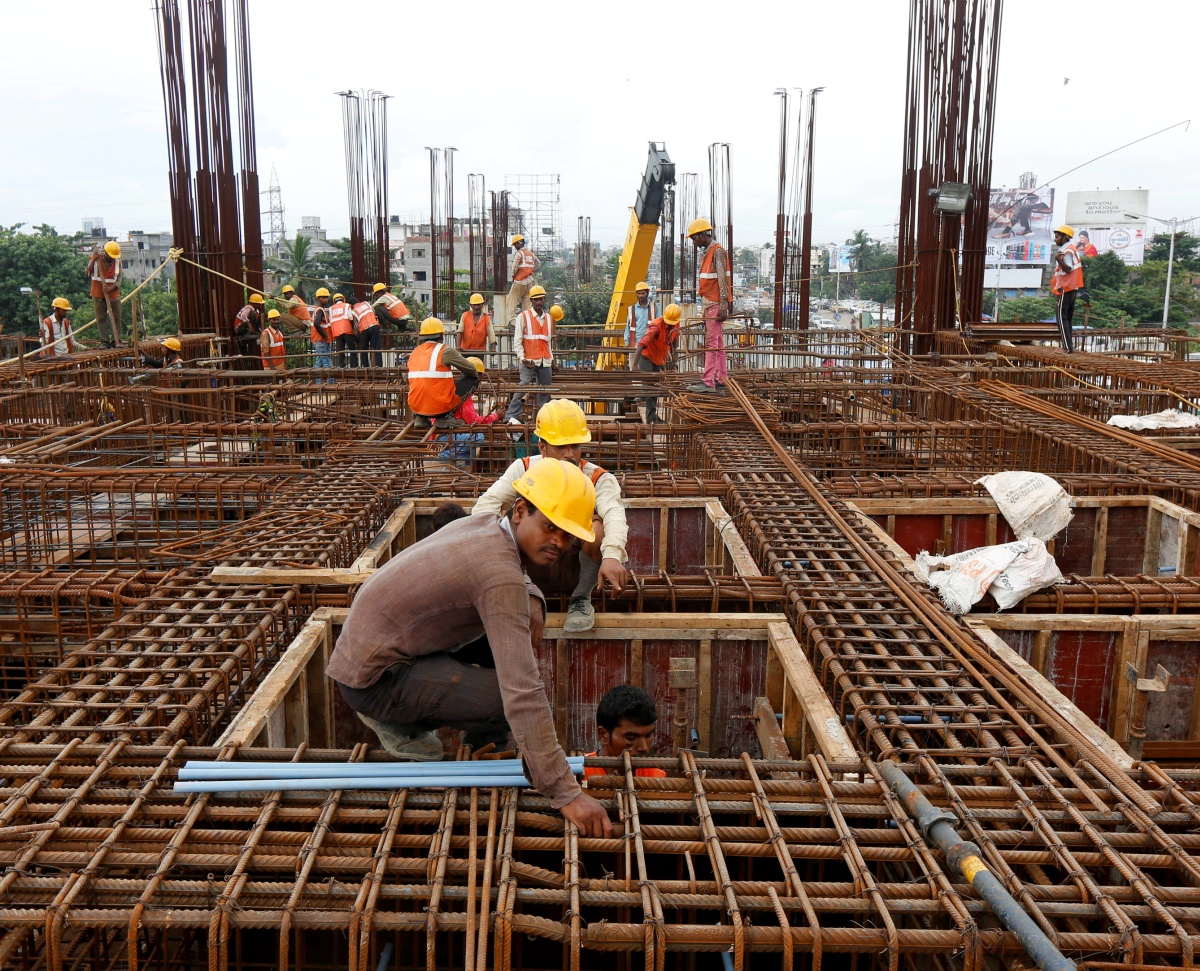This is one of the largest monthly increases in the labour force, observes Mahesh Vyas.

The Indian labour markets saw substantially increased activity during April 2022.
The labour force swelled and employment increased handsomely during the month.
People seeking employment increased in large numbers and the Indian economy was able to provide additional employment in large numbers as well. But, the additional jobs that became available were inadequate compared to the demand.
As a result, April also saw an increase in the people left unemployed and the unemployment rate inched up a bit compared to its level in March.
The labour force increased by 8.8 million -- from 428.4 million in March 2022 to 437.2 million in April 2022.
This is one of the largest monthly increases in the labour force if we exclude the lockdown impacted months when the movement in and out of the labour markets was extraordinarily high.
In fiscal 2021-2022, the average monthly increase in the labour force was 0.2 million.
During half of the months of the year, the labour force either shrank by about 2 million or expanded by 2 million. The max expansion was of 8 million in December 2021.
In comparison to this record, the 8.8 million expansion of the labour force in April 2022 is extraordinarily high.
An 8.8 million increase in the labour force is only possible if some working age people who were out of the labour force joined the labour force in April.
This is because the working age population cannot grow by more than about 2 million per month and around half of the new additions are expected to be not interested in joining the labour force.
Therefore, any increase in the labour force of more than a million implies a migration of people from 'out-of-labour-force' into the labour force.
People who could have been in the labour force but had chosen to sit out were now flooding the labour markets. This is the opposite effect of the phenomenon where disappointed people move out of the labour force.
Implicitly, April saw some of these 'disappointed' people, or quitters, coming back into the labour markets.
Evidently, the labour market is a dynamic place with labour moving in and out of it, presumably depending upon the demand at a given point in time.
In this context, it may be useful to note that the 8.8 million increase in the labour force in April comes after a 12 million fall in the same during the preceding three months.
Labour moved out of the labour markets during January-March and has come back in April.
Employment expanded by 7 million in April 2022. This is also an extraordinarily large increase.
This expansion also comes after three consecutive months of decline in employment.
Employment had fallen by 10 million from 406 million in December 2021 to 396 million in March 2022. In April, it recovered part of this fall reach to 403 million.
An 8.8 million increase in the labour force and a 7 million increase in employment in April imply a 1.8 million increase in the count of the unemployed. This rose to 34.2 million.
April 2022 also saw a 2.3 million increase in the count of those who stated that they were unemployed and were willing to work if work was made available to them but were not actively looking for employment.
The count of these rose to 19.5 million in April 2022. This again indicates that the labour markets are attracting labour back into its fold.
Interestingly, the increase in employment in April was in industry and in services.
The agricultural sector shed 5.2 million jobs. Part of this decline could be seasonal and a reflection of the winding down of the rabi harvesting season.
Part of the decline in labour in agriculture could be because of the shrivelling of the wheat crop and the consequent decline in wheat production.
Wheat production is expected to have fallen by between 10 and 20 per cent this year because of the intense heat wave.
Industry added 5.5 million and services added another 6.7 million jobs in April.
Within industry, 3 million jobs were added in manufacturing and construction added nearly 4 million.
Mining and utilities reported sharp declines in employment. This seems to coincide with the coal shortages and the consequent stress in the power sector in India.
Within manufacturing, it was heavy industries such as metals, chemicals and cement that added jobs.
Within services sector, the increases were in the retail trade, hotels and restaurants industries.
The increase in employment in industry and services is unlikely to have been of the better quality jobs.
This is indicated by the fact that the increase in employment was largely among daily wage labourers and small traders. This type of occupation saw an increase of 7.9 million jobs.
Entrepreneurs increased by 4 million and farmers fell by 5.1 million.
There was almost no change in salaried jobs. Perhaps, if the labour markets continue to remain heated, the demand for better quality jobs will also increase and break the deadlock they seem to be trapped in.
Salaried jobs have been yo-yoing between the high-70 million and low-80 million mark since July 2021. These jobs averaged close to 79 million during March and April 2022.
They averaged at 81 million during 2021-2022. But, they were at 87 million before the pandemic in 2019-2020.
April 2020 has seen a big increase of 12 million non-farm jobs in India. Two-thirds of these were of daily wage labourers and small traders. The quality of jobs expansion needs to improve.




Feature Presentation: Ashish Narsale/Rediff.com










